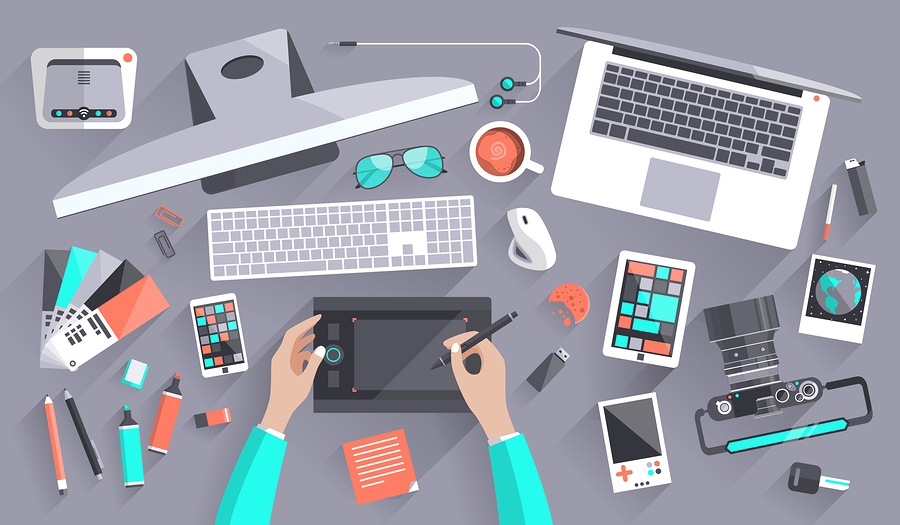Let’s take a look at the general concepts of web design and web development and their role in creating the websites and apps we all know and love. Web design deals with what a user sees on their computer screen or mobile device, while web development determines what code makes a website tick.
So What Is Web Designing?
Web design consists of numerous components that work together to create the finished experience of the website, including graphic design, user experience design, interface design, search engine optimization (SEO), and content creation. Design is an essential part of the process, whether you want to create a static website or a dynamic web application. Web design is determined by the visual aesthetics and ease of use of the site. A color scheme, layout, flow of information, and related visual aspects of the user interface (UX), the user interface, and the user experience.
A role as a Web Designer differs from that of a web developer who specializes in making web design a reality by writing code that dictates how the different parts of a site fit together. A Web designer is not only responsible for understanding how code works but also for making it more aesthetically pleasing and user-friendly for visitors to the website. In a small organization, a person may only need the necessary skills to design and program a complete website, while in a larger organization, a web designer may be responsible for all visual aspects.
Web design is a multidisciplinary task, and you need not only knowledge of design, typography, and color theory but also the skills to develop a website in HTML, CSS, and JavaScript. Web designers create the visual design and interactive prototypes of a Web site and leave the encoding of the Web site to the front-end and back-end developers. Those with the necessary skills can do any job, but some specialize in certain areas of web design, from creating websites to developing mobile apps.
While it is true that UX design covers more platforms than just Web browsers, a significant amount of UX design work is done on products that are at least partly web-based (think social media sites like Facebook and Twitter, web apps like Dropbox, and services like Google Now ). Although there is some overlap between web design and UX design, both are great if you do some form of user research that is an iterative process to improve a website with user data.
Web design recognizes the ease of use of a website or app by taking into account its layout, structure, visual aesthetics, colors, fonts, and content. As with all aspects of creating SEO-related content, web design plays a role in ensuring that your website code is clean and user-friendliness does not hamper your experience.
Web design is the creation of websites and pages to ensure a smooth and effective user experience. Web design is the process of planning and building elements of your website: structure, layout, images, colors, fonts, and graphics. Web design professionals are responsible for creating digital experiences that can be used by the public using HTML to program websites and CSS to standardize the visual language.
Designing a Web application requires, on the one hand, a lot of user research to understand the user experience and its structure, taking user-friendliness and visual aesthetics into account. It would help if you learned to use color psychology, grid systems, and web fonts to design a website that is attractive and responsive to all types of devices. A good web designer must be able to imagine what a website will look like, the graphical design of the website, how it will work, conversion design, and how to work with it.
Web designers often work with template services such as WordPress and Joomla, which allow you to create web pages with themes and widgets without writing one single line of code. When designing a website, web designers use typography, colors, layouts, shapes, and the emotions of the user. HTML and CSS are used to design the appearance of the website, and images are created.
Web designers use blank spaces, known as white space, to organize the elements of a website and grid-based design to keep the pieces on a website in order. Web development teams use tags like Head >, Title > and br > to attach certain design elements to an area of the page.
If you work within an organization while a person progresses in their career and advances through the design team and management, you can expand your current skills to become a web developer and cover web design and development. User experience developers, also known as UX developers, have both technical and design skills to create websites that attract and keep visitors. Standard, large and complex web pages allow the designer to focus on the overall picture while the technical challenges are passed to the development team.

Other tools used by web designers include mark-up validators [8] and other user-friendliness and accessibility testing tools to ensure that their websites comply with Web accessibility guidelines. These changes make it easier for mobile users to use your website and improve your UX design overall. Professional web design helps a company develop a positive relationship with their visitors by ensuring that navigation on their website is easy to understand, predictable and consistent.
The Treehouse Technology Training website is our most important online training recommendation to understand What Is Web Designing, as it focuses on web design and is recommended by many of the world’s most trusted and respected web designers, such as Chris Coyier, and most of their instructors are web developers and designers themselves.
Once Flash (also known as Futuresplash) was simple compared to the use of basic layout and drawing tools and a limited precursor of ActionScript and Timeline, but it allowed web designers to go beyond HTML, animated GIFs, and JavaScript.







